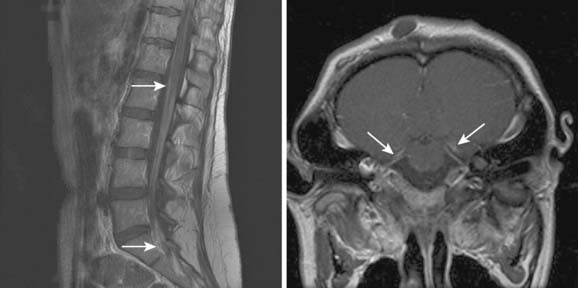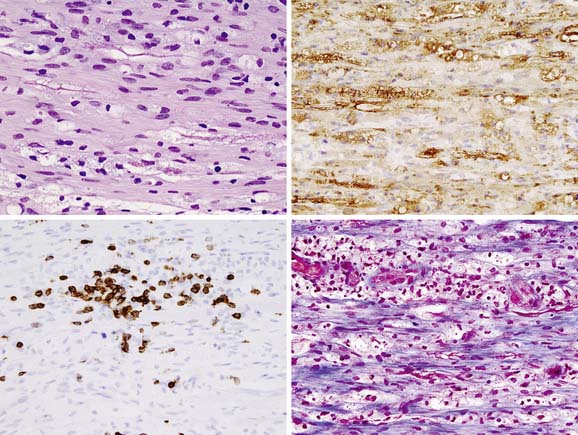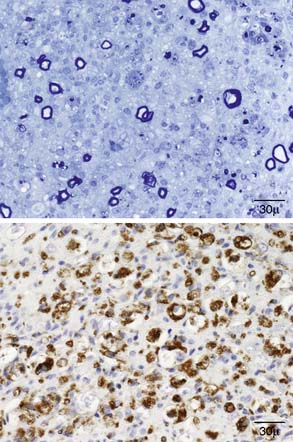Multiple cerebrospinal fluid (CSF) analyses showed consistently high protein levels (maximum 1250 mg/dL) and cell counts (maximum 250 white blood cells, 89% lymphocytes) but no malignant cells (Table 5-2).
Magnetic resonance imaging (MRI) showed marked enhancement of cauda equina and thoracolumbar nerve roots, multiple cranial nerves, and leptomeninges (Fig. 5-1).

Figure 5-1 Magnetic resonance imaging (MRI) scan of the lumbar spine and cauda equina, showing thickened, gadolinium-enhancing roots (arrows) (left) and brain MRI (right) showing contrast enhancement of cranial nerves VII to VIII bilaterally (arrows).
A fascicular nerve root biopsy was performed. It revealed marked axonal degeneration, numerous macrophages, few T lymphocytes infiltrating endoneurium but neither granulomas nor atypical lymphocytes (Fig. 5-2). Nerve fiber histogram and paraffin sections showed marked fiber loss (Figs. 5-3 and 5-4) and inflammatory infiltrates (see Fig. 5-3). The pattern was believed to be most consistent with a fulminant inflammatory process.

Figure 5-2 The biopsy consisted of spinal nerve demonstrating influx of macrophages (H&E stain, upper left) among nerve fibers with accompanying myelin loss. Loss of uniformity and bubbling of Schwann sheaths was seen (S100 protein immunostain, upper right). Influx of cytologically benign, small T lymphocytes (CD3 stain, lower left), as well as interstitial fibrosis (trichrome stain, lower right) were also evident. Magnification ×400.

Figure 5-3 Paraffin section of the nerve showing marked fiber loss (upper panel) and CD 68 stain (lower panel) showing the inflammatory infiltrates.
Stay updated, free articles. Join our Telegram channel

Full access? Get Clinical Tree









